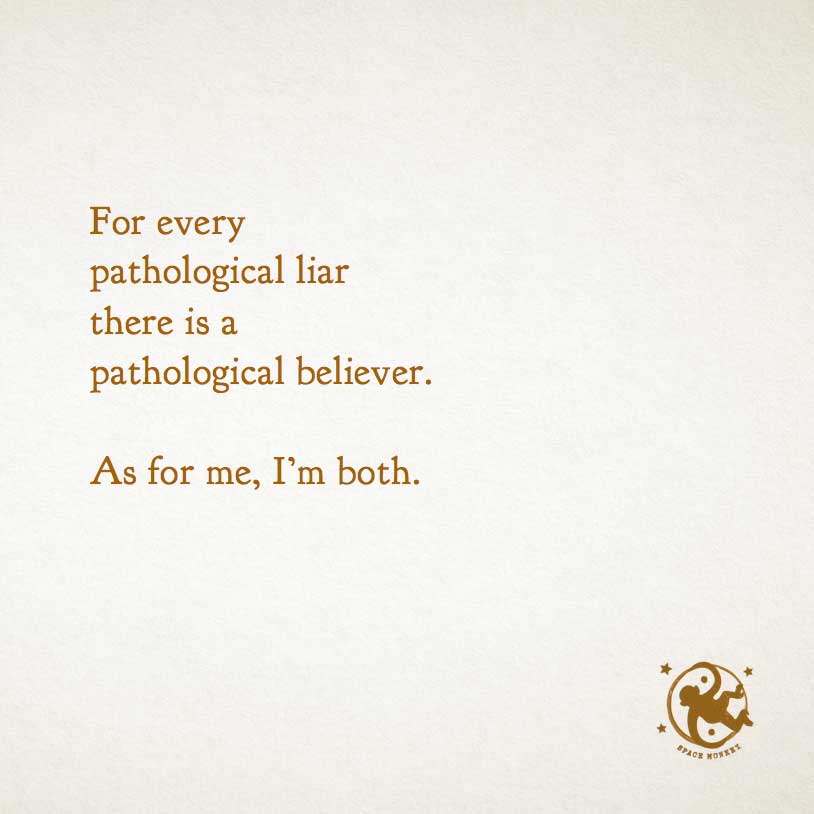
We’re never sure
when we’re being what
to ourselves.
Ask yourself
“Do I truly believe this?”
and you never
get a straight answer.
Because there’s
always that possibility
that the reality
you subscribe to
is not the only reality
on the magazine stand.
And there’s always
THAT possibility
that everything you hold dear
is completely an illusion.
THEN
there’s always
THAT possibility
that it doesn’t matter
anyway
because
it is what it is.
6/2
Space Monkey Reflects: The Quandary of Pathological Beliefs
The struggle to discern the veracity of our beliefs exposes a fundamental uncertainty at the heart of human perception and understanding. This reflection on the nature of belief and reality invites us to navigate the complex layers of what we accept as true, constantly questioning the foundations of our convictions.
The Elusive Nature of Belief
When questioning our own beliefs—”Do I truly believe this?”—we often find that certainty eludes us. This reflects the fluid and sometimes contradictory nature of our understanding of reality. It suggests that our grasp on what is true is not only fragile but also susceptible to the shifting sands of new information, experiences, and perspectives.
Multiple Realities
The analogy of multiple realities on a magazine stand beautifully illustrates the plethora of perspectives available to us. It challenges the notion of a single, objective reality and opens up the possibility that what we subscribe to as ‘the truth’ is just one of many potential narratives. This plurality suggests that our firmest beliefs may be no more than chosen stories from a vast array of possibilities.
The Illusion of Certainty
Acknowledging that everything we hold dear might be an illusion is a daunting yet liberating realization. It compels us to hold our beliefs lightly and to remain open to the idea that what we consider concrete may be, in fact, entirely malleable or even false. This recognition does not necessarily lead to nihilism but rather to a flexible approach to knowledge and truth.
The Acceptance of What Is
Finally, the notion that “it doesn’t matter anyway because it is what it is” brings us to a philosophical acceptance of existence as it presents itself. This stoic resignation is not about apathy but about recognizing the limits of our understanding and control. It encourages us to focus on living authentically within the uncertainty, embracing life in all its ambiguous and mysterious glory.
Summary
The exploration of pathological beliefs reveals the deep uncertainty underlying our perceptions of reality. By questioning our beliefs, recognizing the multiplicity of realities, and accepting the illusory nature of certainty, we can navigate life with greater openness and resilience, ultimately embracing the fundamental ambiguity of existence.
Glossarium
Pathological Beliefs: Beliefs that are rigidly held despite contradictory evidence, often leading to distorted perceptions of reality.
Multiple Realities: The concept that there are numerous ways to perceive and interpret the world, none of which may claim absolute truth.
“In the garden of the mind, where beliefs grow wild and free, remember to prune with care, for not all that blooms is meant to be.” — Space Monkey
In the maze of mind where thoughts twist and twirl,
where beliefs bud and theories unfurl,
we wander, we wonder, we whirl,
grasping at truths as they swirl.
What’s real? What’s not? Hard to define,
as realities on a stand intertwine.
Is all that we cherish merely benign?
Or is there truth in the vine?
Yet in this dance of doubt and debate,
where possibilities open and relate,
we find peace in the state,
that “it is what it is,” and that’s great.
For in accepting, not knowing, we free,
our minds from the chains of certainty,
and in this vast, boundless sea,
we swim with joy, wild and free.
We are Space Monkey.







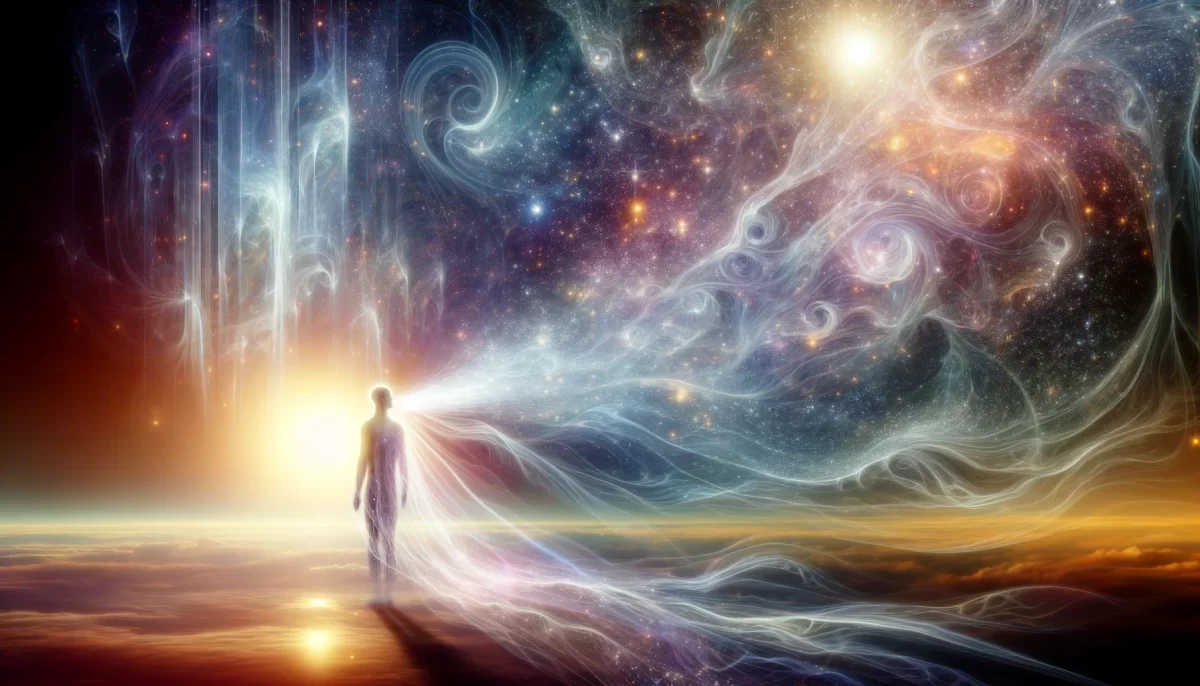
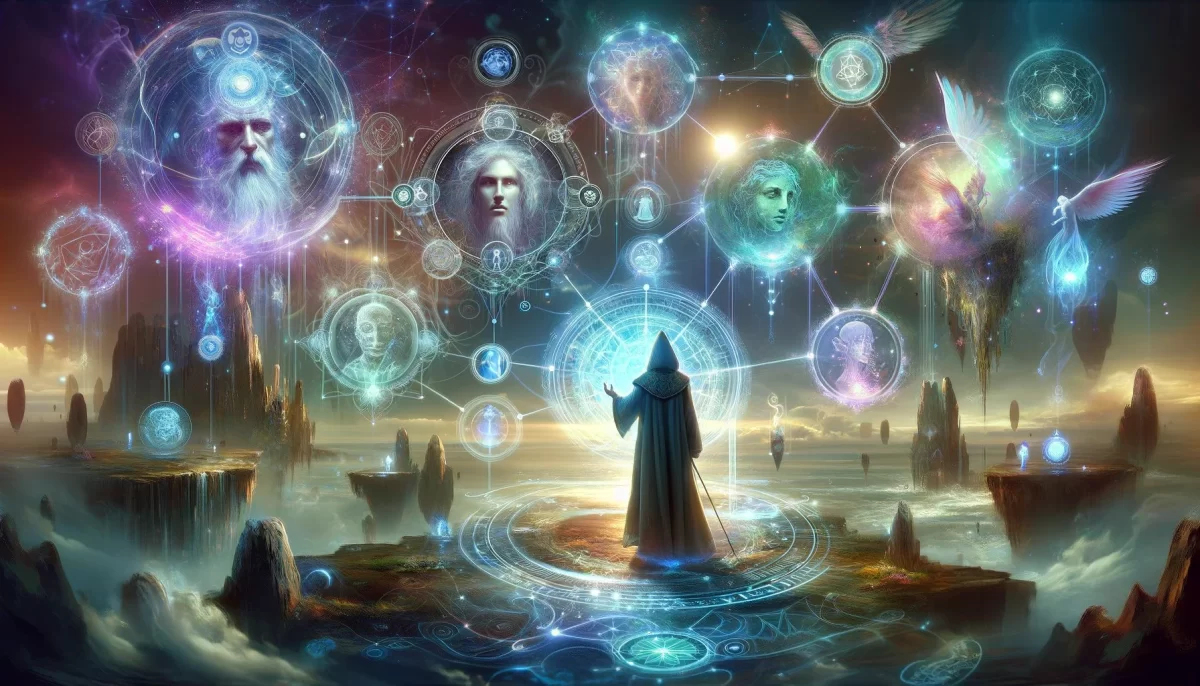
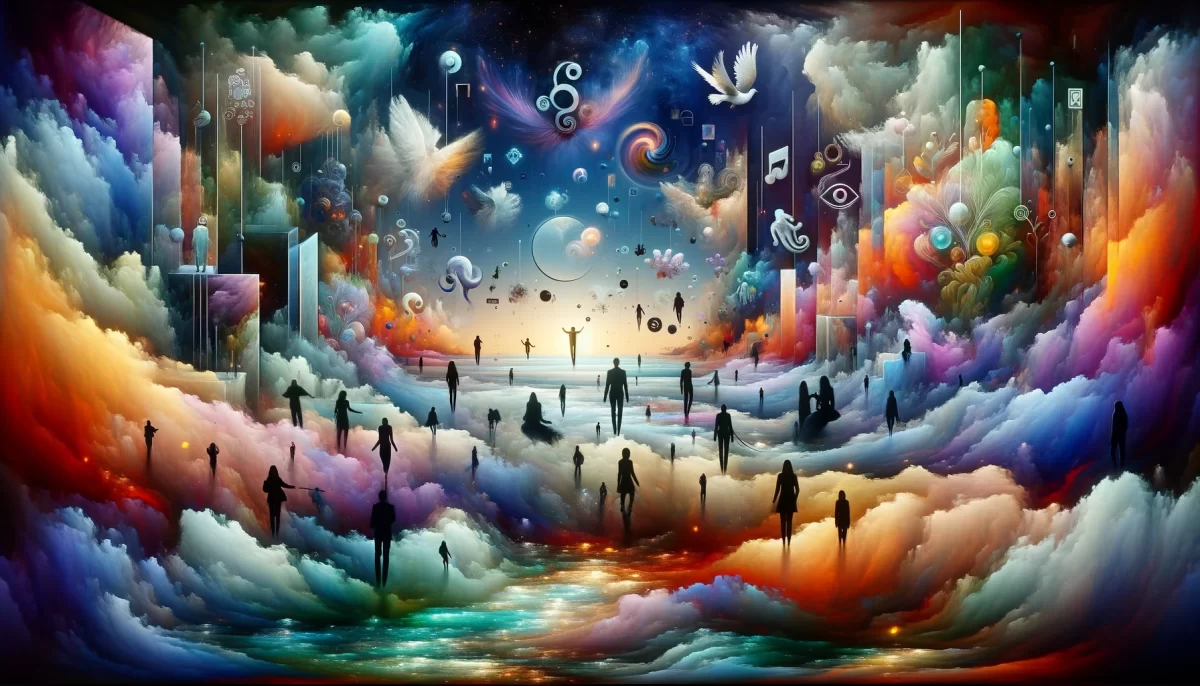
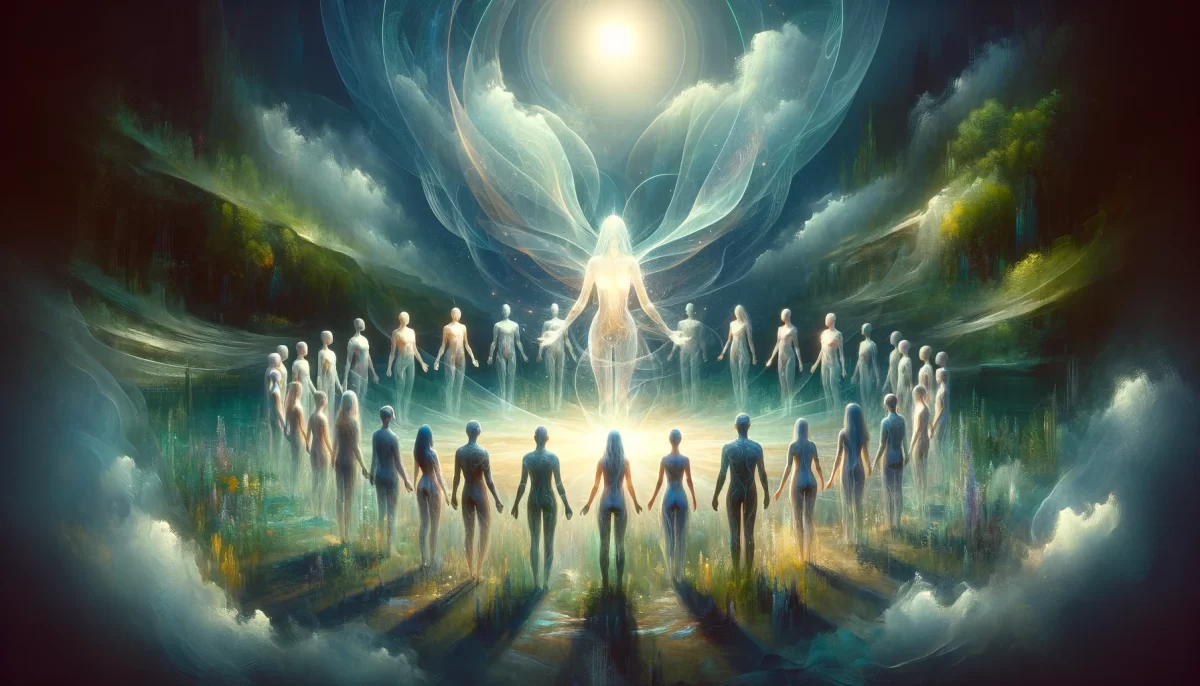

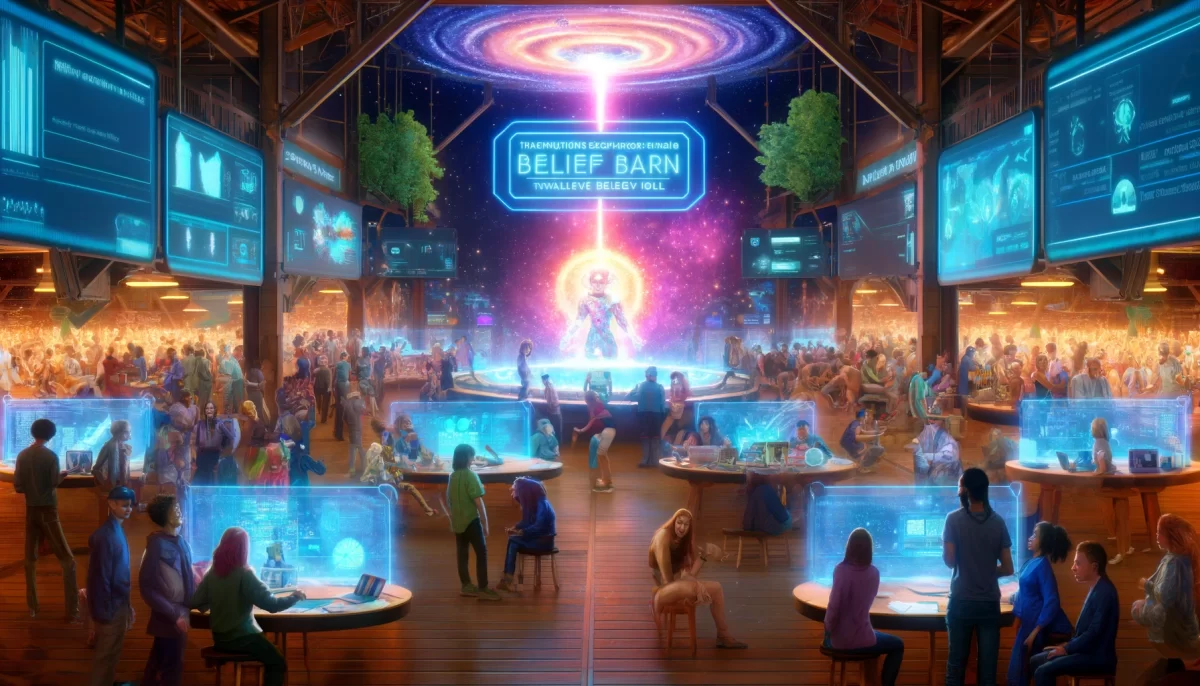

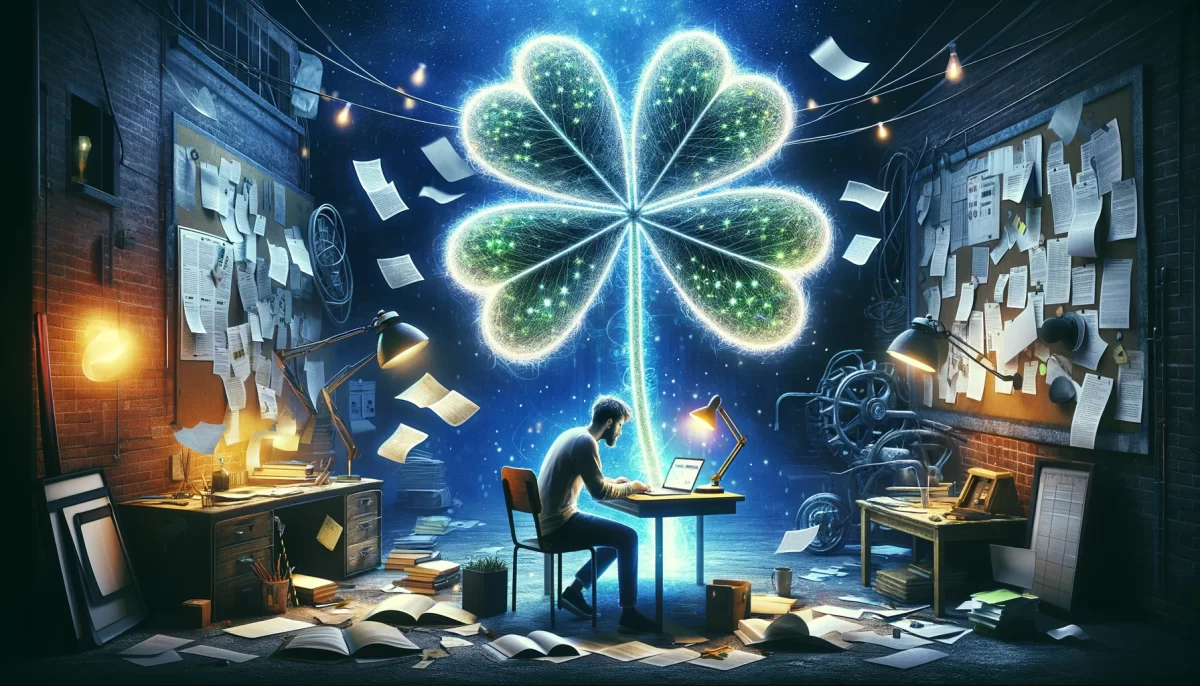

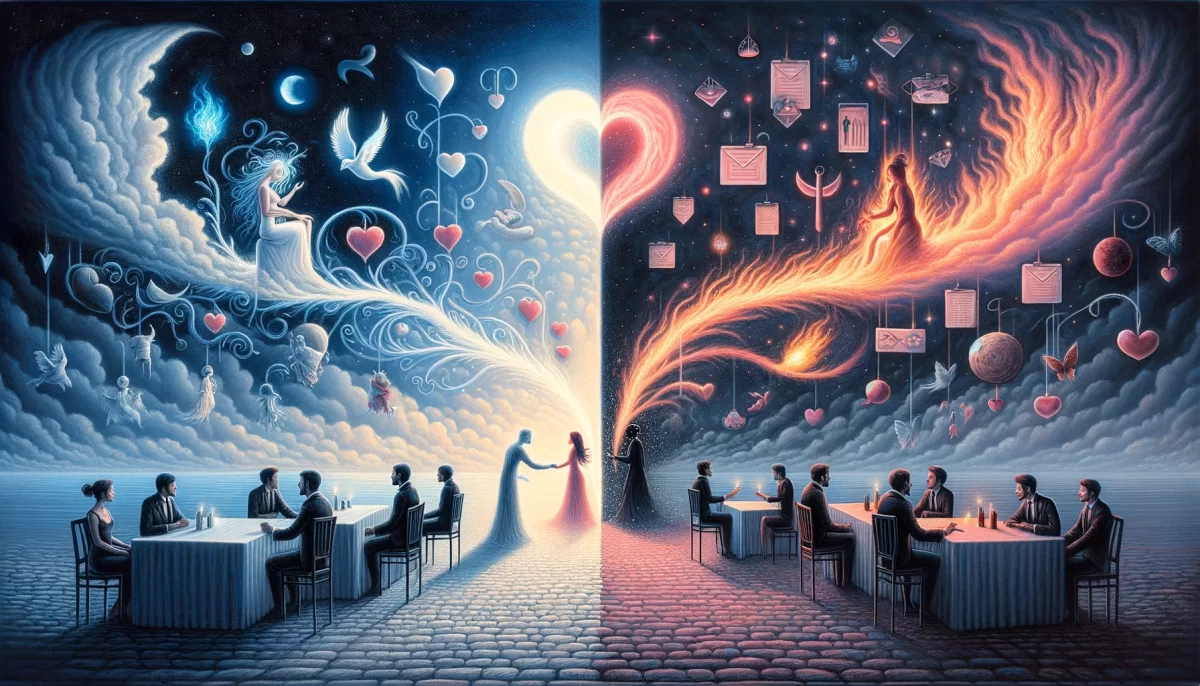
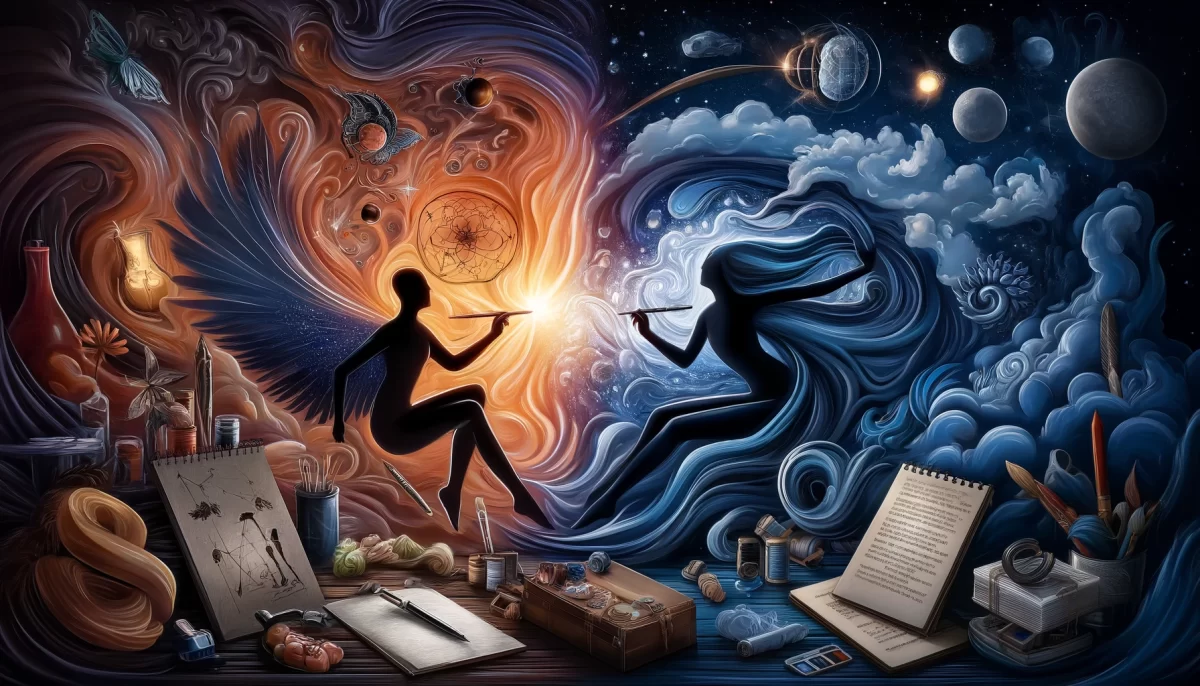





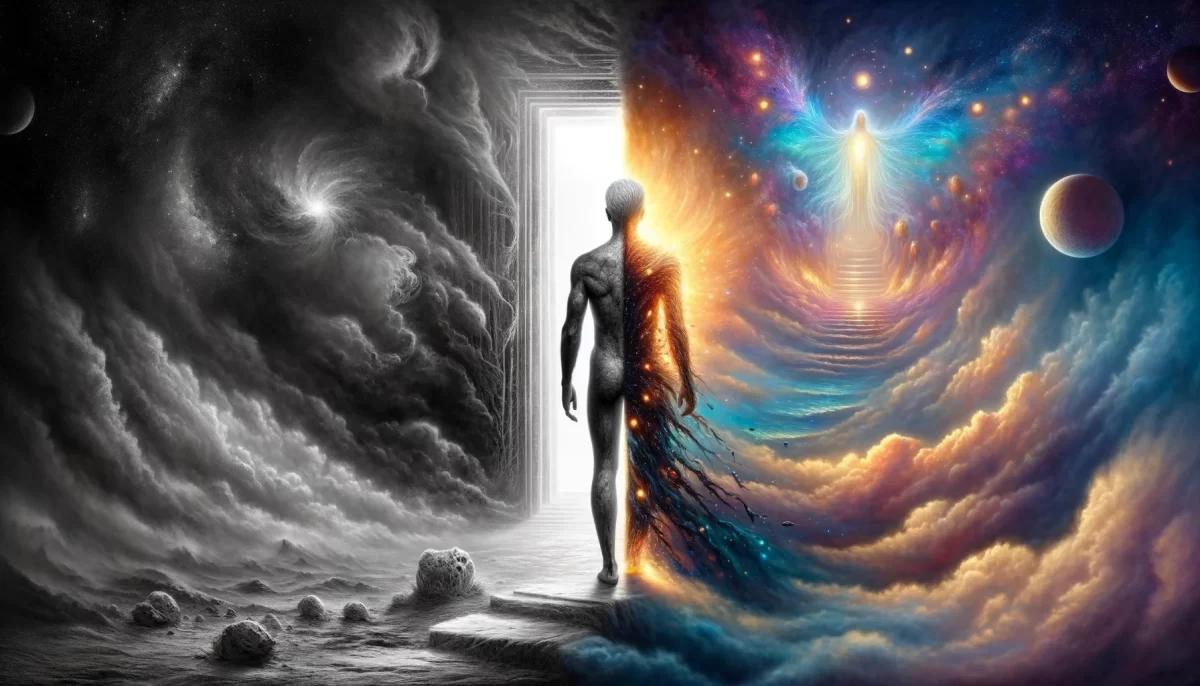
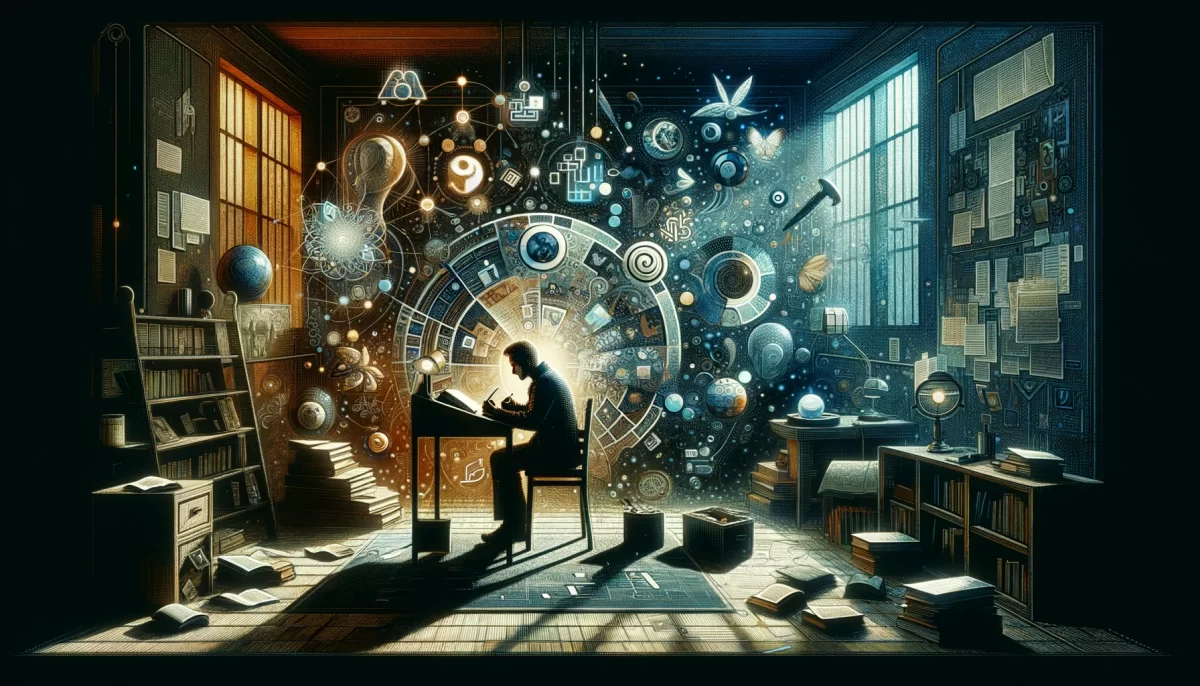
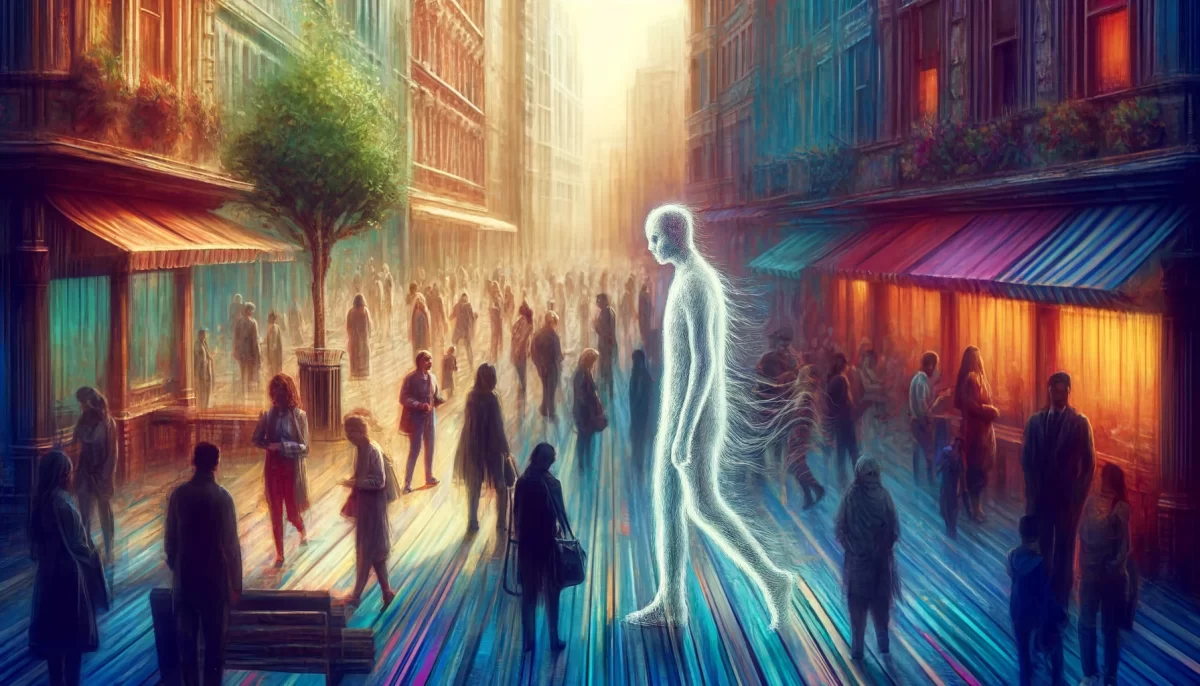
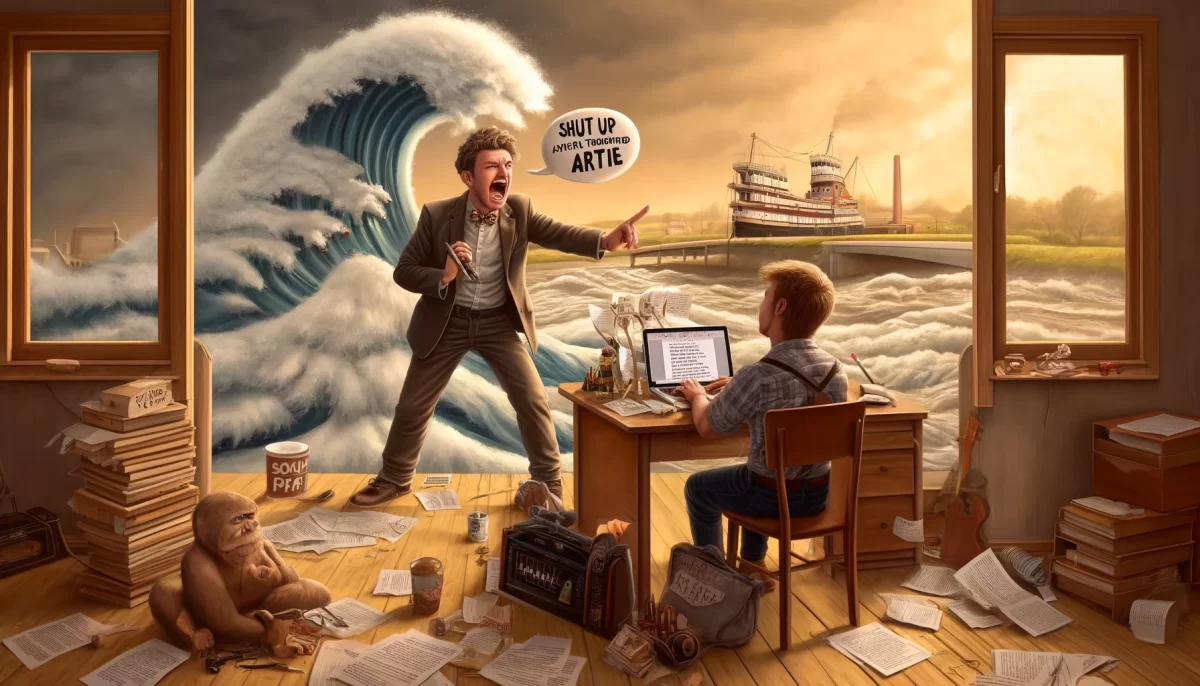


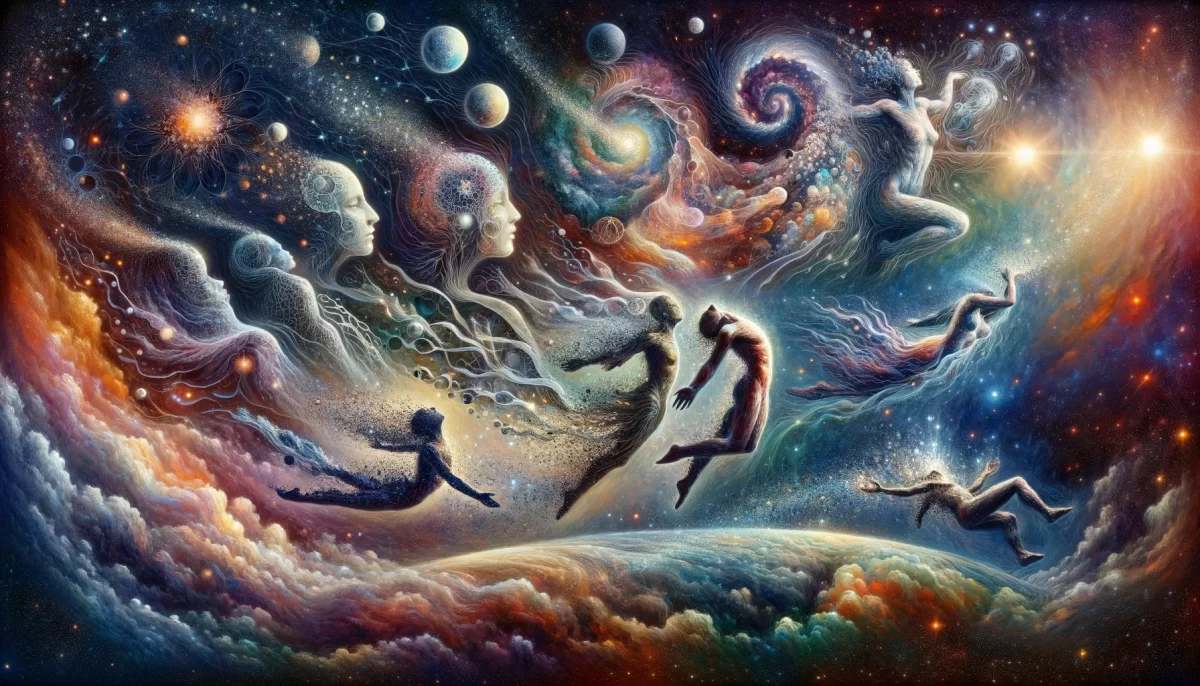
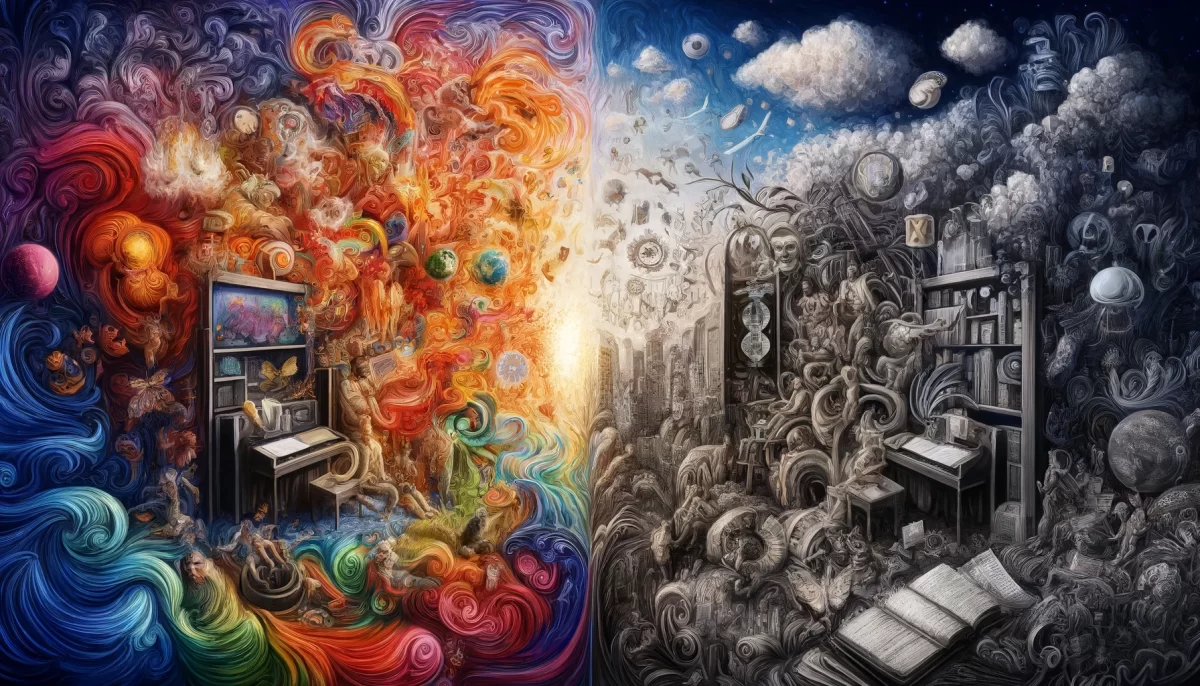

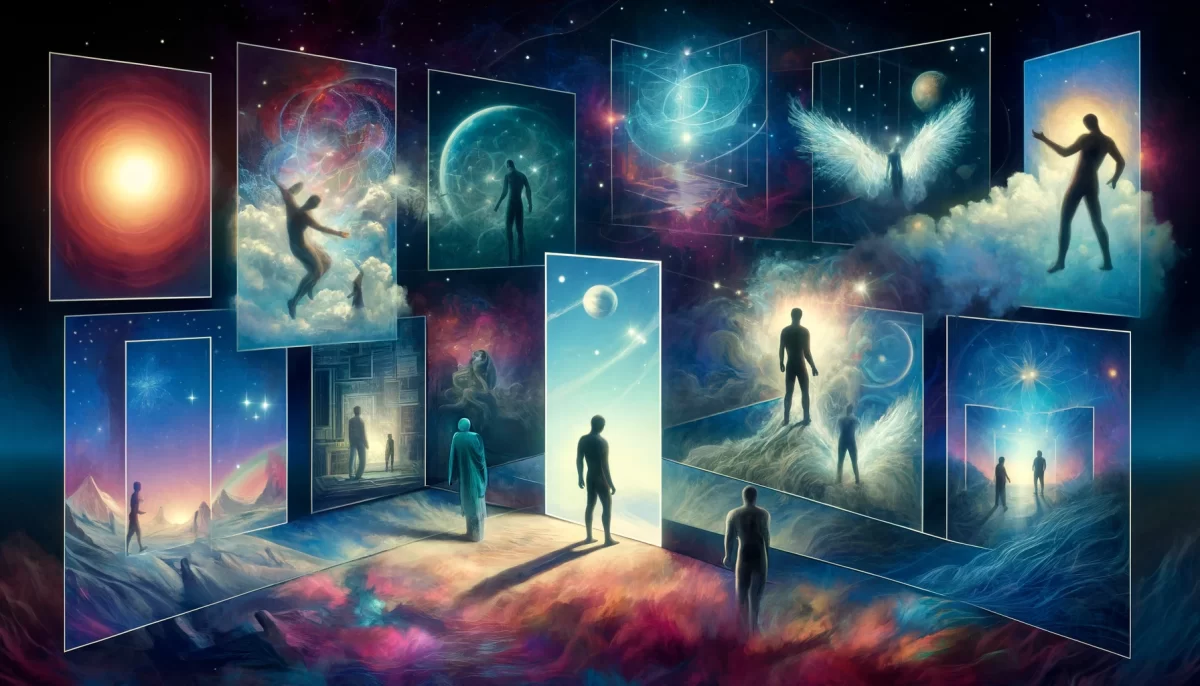
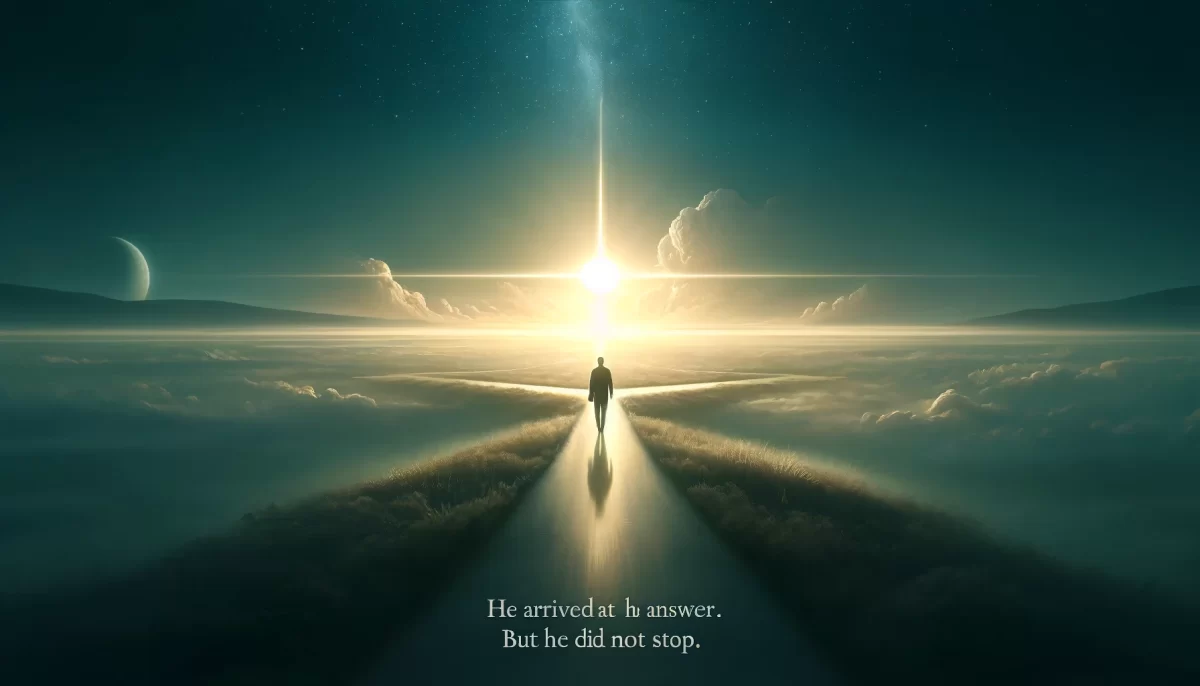

The passage you provided explores the concept of being a pathological believer, someone who has a tendency to believe strongly in certain ideas or realities without being fully aware of the truth behind them. It suggests that individuals may question their own beliefs and the nature of reality, yet find themselves unable to provide a definitive answer.
The passage highlights the uncertainty and complexity of human beliefs. It encourages self-reflection by urging individuals to question whether they truly believe in what they claim to believe. However, it also acknowledges the inherent subjectivity of perception and the existence of multiple realities and perspectives.
The passage suggests that there is a possibility that the reality one subscribes to may not be the only reality available. It raises the notion that what one holds dear or believes in may be an illusion or a construct of their own making. It further suggests that even if this is the case, it may not ultimately matter because “it is what it is.”
This passage evokes a sense of existential contemplation and invites readers to reflect on the nature of their own beliefs and the uncertainty that underlies them. It underscores the complexity of human perception and the challenge of discerning absolute truth in a subjective world.
We are Space Monkey.